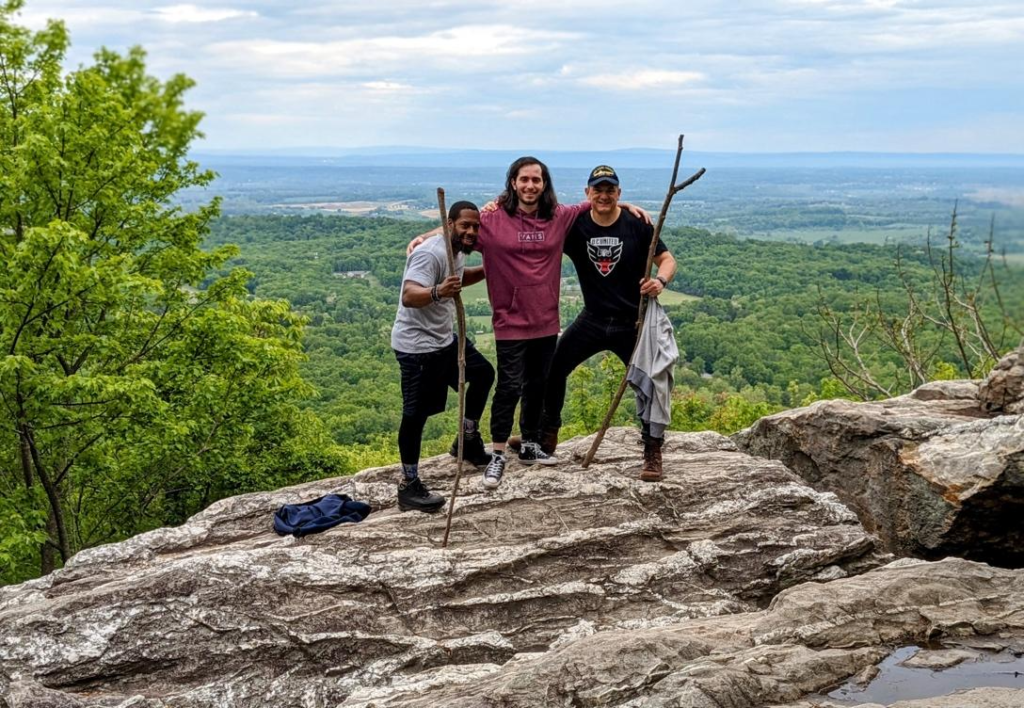The last month has been a time of profound challenge for so many. The war in Israel and Palestine, along with so many other conflict situations throughout the world, has surfaced deep divisions within our spaces and the visible and invisible suffering that many are carrying with them. For years, Mission in Motion has attempted to communicate the myriad ways that Georgetown, through an abiding commitment to its mission and values, seeks to accompany everyone on their journeys of life, especially during times of adversity and challenge. This offer of “care for the whole person” was especially evident during the COVID-19 pandemic and in response to the increasing awareness of the need for greater racial justice and urgent social change that leads to greater diversity, equity, and inclusion.
In many ways, then, next week’s celebration of Thanksgiving might not have its usual glow. It is incredibly difficult to force a spirit of thanks and gratitude at a time when such dispositions seem so far away and unnatural to our lived experience. In this post, I would like to affirm that it is ok to feel less than enthusiastic about the coming holiday. I would also like to offer a reflection about how a spirituality of gratitude, which is at the root of Ignatian spirituality, has to be appreciated in a larger context. Gratitude alone is not sufficient to making our way through difficult times. We have to find ways, individually and collectively, to become more aware of the challenges that divide us as human beings and then work together, aided by the knowledge, skills, and values cultivated during our time at Georgetown, to repair harms and restore healing in the world.
The Ignatian practice of the Examen, featured many times on the blog and practiced each Friday during the SCS digital meditations, revolves around gratitude. The cornerstone of the practice is becoming aware of our gratitude. We might ask ourselves during a regular practice of Examen: For what am I grateful as I look back at the last day/week/month? When I let myself be washed over with gratitude looking back at a period of time, what comes to the surface? The idea here is that locating a gratitude becomes an opportunity to self-reflect on my own giftedness and how I might be invited to share that thanksgiving through generous actions in the world. Gratitude is the soul of generosity and loving kindness in the world. It is difficult to express gratitude for others when we are not finding it within ourselves and our experience.
There are so many possibilities to living life in a spirit of gratitude. But there are also some cautionary lessons about this way of proceeding spiritually. In their article, “Ignatian Spirituality and Positive Psychology,” Phyllis Zagano and C. Kevin Gillespie pick up on the work of Jesuit psychologist Charles Shelton, who is concerned about the potential to over-idealize gratitude. For Shelton, the gratitude disposition can lend itself to “optimistic exuberance” that covers up personal challenges that need to be addressed or more realistic engagement with a complex world that needs to be reappraised. Zagano and Gillespie maintain that gratitude has to be balanced, recognizing that the goal of life is not always the “simple pursuit of happiness” and “personal self-development.” Instead, spiritually mature people qualify happiness when situations of injustice and moral complication arise.
So how does this connection to Ignatian spirituality relate to your Thanksgiving holiday? My hope is that you can take some time to recognize that while you might desire to feel gratitude, this feeling might not arrive. Instead of forcing it, I invite you to consider what you need in this moment of life to address the challenges you’re experiencing personally and professionally. We do not journey alone and this little Thanksgiving respite from work and study might be a good time to reach out for more support on your path ahead.
Resources at the University are available to help you navigate the path ahead. In addition to professional counseling services (for faculty and staff, please consult the Faculty & Staff Assistance Program; for students, please consult Counseling and Psychiatric Services) and pastoral care resources (please consult Campus Ministry chaplains and staff), we are here to listen.



